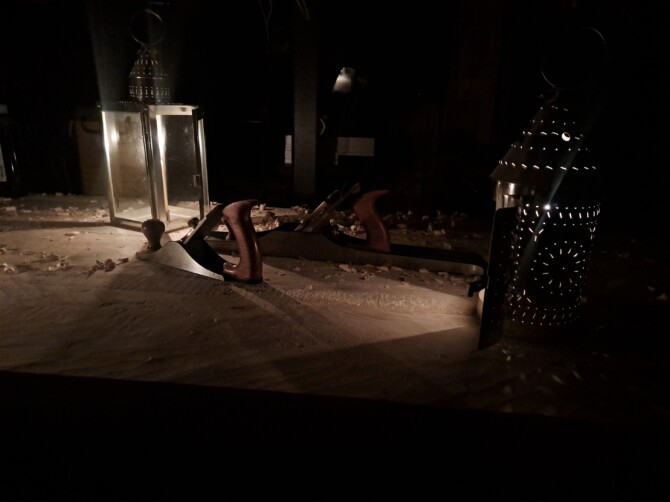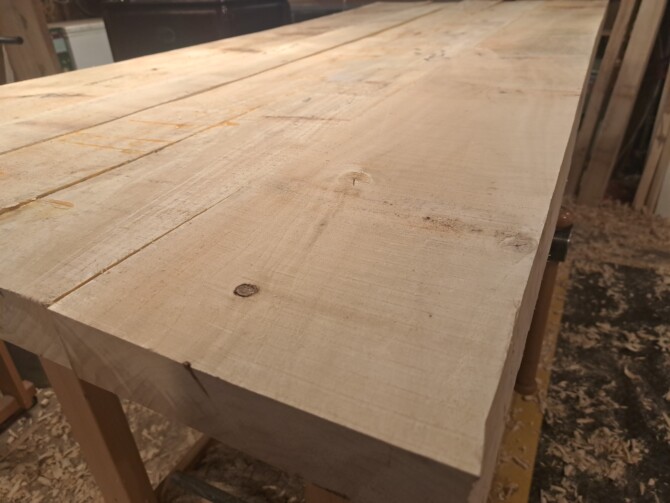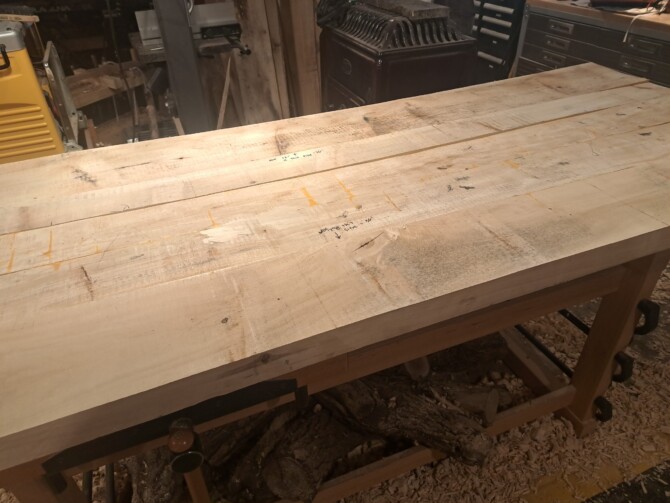
Alright, alright. I am not working by candlelight out there in the shop; however, I did want to catch the ambiance while I was there. Below you will find a set of images taken as I flipped the board over showing how it looked roughly when I started the other side.
The board is glued up warped wood, jointed, rather poorly, I might add, then hammered to the benchtop with holdfasts to straighten them while I glue each one at a time to the pack. Each bord is held straight by the one next to it which is laid to bend the opposite direction. The whole thing is held straight under tension.
The board is meant to net 36 inches wide by 84 inches long. I don’t know a soul who has a 36-inch power planer. One of my best friends runs his family’s hardwood business, and their only goes up to 19 inches or so. We used to stuff 21-foot mahogany boards through it, so it is no small potatoes. The thing was a beast. And it was old when we were doing that back in the early 1990’s. No, the nest they could do there is put it through a drum sander over and over again till it is done.
So, hand planing it is.
Now, I cannot emphasize enough this next point after several people I have talked to about what project I am working on now have said, “and then you will have to sand it.”
If you are using a smoothing plane, and you have a sharp iron in it, you do not have to sand it. My final planing will be such. I may have to use a card scraper on some portions, but the smoothing plan is one you have a mild camber on, and it leaves no planing marks. It cuts like hell and leaves a smooth finish. Smoother than what you could get with sandpaper. Even the knots can be done well. So, I plan to plane. If for some reason I am proven wrong, my apology and some sandpaper are all in the bottom drawer of the toolbox. However, I have never sanded anything I have planed. There’d be no point to it. Cutting blades do a finer job.
The final pictures are yet to come. I have some of the top smoothed now, but I did not take pictures. I will do the whole thing once over, then do it again with the iron freshly and thoroughly sharpened. I have put arrows at the ends of each board to remind me of the general direction of the grain on each, though nothing is absolute. But because they are in tension, the boards are in opposition, and the grain alternates. Fairly simple enough.



